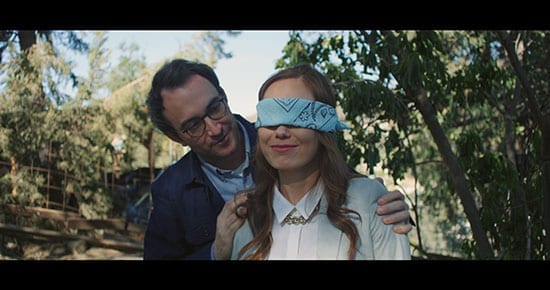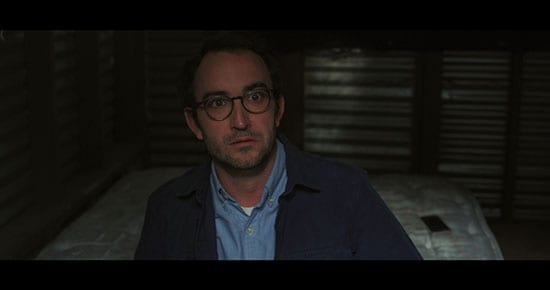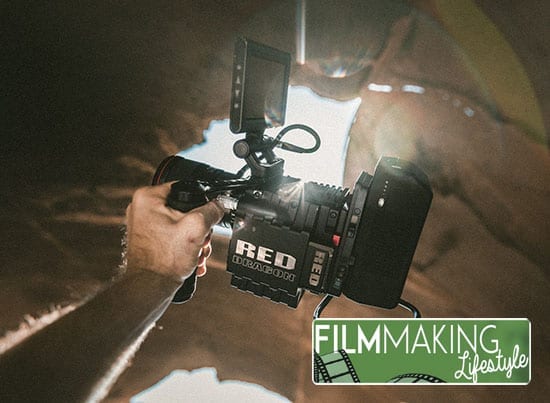The script is airtight. You’ve stayed up until the wee hours perfecting your shot list. You’ve jotted down helpful verbs to whisper into your actors ears during key moments. You and your team have strategized the order of the shooting day ad nauseum.
You are one hundred percent prepared. No, that’s not enough… you are one hundred and ten percent prepared!
No you’re not. Because you didn’t prepare yourself for being open hearted to everyone you entrusted your baby with. Or the unpredictable elements the Film Gods tossed your way.
This is a huge lesson I learned from a short film I made last year: that the unforeseeable challenges must not be treated as the enemy but as the gift. We need the problem, because we need the gift… right?
I’m going to share with you how I applied the lesson of malleability to my latest film, Damage Control (Selected Weekly Feature on Film Shortage).
The Writing
Be comfortable enough with the material to let go.
Words are the bible for screenwriters like Quentin Tarantino, Aaron Sorkin, Paddy Chayefsky and rightfully so. They are in a class of their own when it comes to style, rhythm and the tone of their words.
You’ve heard the story that the only actor Tarantino trusts to go off the page is Samuel L. Jackson.
Let’s be real, the most badass of badass actors probably isn’t in your movie. Yet. So does that mean you’re going to interrupt your actor by yelling cut when he or she is going through the emotional logic of their character?
I wouldn’t. Not anymore. There could be gold in there. Not necessarily in the words they improvise but the switches in their eyes or gestures they make while delivering the dialogue.
As a Director I try to be attuned to body language just as much as I am with dialogue delivery, because it’s all in the eyes.
If you can’t see the gears turning, the performance isn’t going to be believable. You’re a barometer for bullshit. It’s not just for the lines being said correctly, that is secondary to authenticity of emotion. You also may realize your lines sound terrible coming out of an actor’s mouth. So be ready to pivot.
Throwing Away Expository Dialogue
In Damage Control, Drew (played by Clayton Farris) has blindfolded his fiancé Alison (Heather Geisler) to surprise her with a newly inherited property, only later to be forced by a mysterious woman to confront his past behavior.
This is an eight-minute film – I don’t have enough time to tell on the page what the couple’s relationship is. You risk writing expository, unnatural dialogue by trying to convey their dynamic.
Think of how it is in real life when you have a long history with someone: you don’t talk about it – it speaks for itself.
What I’ve learned is to throw away all of the, “remember we did this, remember we did that” dialogue I’ve fussed over until the moment of shooting and relied on the actors to convey this through their behavior.
I totally let go of the material in the first few scenes of Damage Control and trusted my actors to do what they love doing: playing. Actors love to play and many of them enjoy going off the book.
I discovered what Drew and Alison’s relationship was through the dichotomy of the actors. This yielded charming and funny dialogue that felt real. They made me see who this couple really was… I couldn’t write that.
As the great Elia Kazan says:
The directing is in the casting.
One word of warning while improvising: keep the ship on course. You know the material best, so if the actor is writing dialogue in the moment, make sure words don’t repeat with proceeding or past dialogue. That’ll be a pain to cut. If you like something they say, make a mental note so you remember to tell the actor to repeat the line when it’s time to shoot coverage.
When A Storm Comes, Sail With The Wind, Not Against It
We thought the contained nature of shooting Damage Control in a single location would make things easier, but the trade off was shooting solely in available light.
Furthermore, the story takes place in a single moment: Alison is on her lunch break and Drew surprises her with their future home – only to discover his sordid past.
My crew and I had to figure out how to efficiently plan our two, short winter days around the sun so that all the shots matched.
This article isn’t about how to make the sun your backlight or using reflectors and flags to achieve your shot. I trust my team to figure that stuff out.
If you’re planning your shots around the direction of the sun, also plan for dealing with scenes that take longer and shorter than expected. Have your lunch at the time the sun is most intense.
As the director, you are a manager of things and captain of the ship. You need to be able to move quickly on your toes when a storm comes your way…
Adapt To Conditions As They Present Themselves
On day two, the entire morning was reserved to shoot out the interior shack scenes, where Drew is confronted by the manifestation of his guilt (played by Ana Zimhart).
This is because the incomplete scenes we shot the day before didn’t match the morning light, so we’d complete those later in the day.
The interior scenes worked out beautifully, the intensity was electric and I felt ready to move on. I proposed what to shoot next and my DP (Andy Chinn) said the light didn’t match. I proposed something else – he said the light didn’t match that scene either.
We spent a half hour going through footage and making note of the light. There was a moment where I thought we weren’t going to finish the day. I self financed the short, hired a cast and crew of eight and had $2000 riding on the day… I was shitting my pants.
This was a big waste of time. You have to adapt to the conditions and call for the next course of direction because you’re the only one that knows what’s up. As result, I was able to piece meal the rest of the shoot while chasing the sun. A shot here, a shot there, an insert you needed – hopefully it will all add up.
The key is to edit in your brain and be organized with what you need and what you already have. Don’t be greedy with time but don’t be frugal either because you’ll be hurting in the editing room.
When it comes to your actors adapting to the race against the sun, I found they were a bit discombobulated having to toggle from moment to moment. Walk them through it, be super simple and specific.
If it is a single emotion you’re trying to illicit, try very surface directions (you spilled coffee on your suit on the way to an important meeting) instead of over-intellectualizing the material and confusing them. I learned that technique directing a child on my short film, Night Light.
Overall, since we shot many pockets of a single location, shoot out those pockets to their completion. Because when you return to them, the light is going to look way different. It will be difficult for a colorist to match the light since it’s baked in there, no matter what color temperature you change it to.
This Isn’t The Movie That Was On The Page, So What Is It?
As a director we learned it’s important to be open to change and now that you’re onto the edit, you have to be open to what your movie has become. I advise throwing the script away because what you’ve shot is now your putty to rebuild, sculpt and chip away at.
Don’t be afraid of it taking on a new form because in the back of your mind you know your vision, you know what the story is, so what matters most now is making something that works.
Damage Control is a suspense film and after watching the rough cut I edited, I knew I had used the improvisational moments in my first act to excess. I completely deflated the tension even though the improv was charming.
I had to allow myself to step back and watch as an audience member and if I felt I was too close to the material, I’d show each edit to a trusted group of friends who knew nothing about the film.
Collaboration in the editing room is just as important as it is on set. You now have an audience to show something to and they will let you know what works and what doesn’t – just look at their faces watching it. So don’t be afraid of the change if it improves the intelligibility of what is happening.
One case in point, in the screenplay, we go back and forth between Alison on the phone putting out a fire at work, doing damage control, and Drew in the shack being forced to confess to his crimes. It’s not that way anymore in the final version.
I had to solve an earlier problem… when Alison takes a phone call and has to step away and Drew is lured inside the shack, we follow Drew through a hallway with Alison outside on the phone… but we don’t hear her.
I had people asking me, why can’t we hear Alison on the phone? We see her in frame. She can’t be listening silently for that long.
I reluctantly moved her dialogue back to this earlier moment and it ended up informing Drew’s decision to go inside the shack. They were working in tandem together instead of servicing something that no longer applies.
The great thing about editing on non-linear systems is the undo button. You don’t have that on set. So the undo button should afford you the currency to be malleable when it comes to experimenting with your edit to not only improve upon it, but see things differently than you did before.
Werner Herzog on Directing” width=”500″ height=”281″ src=”https://www.youtube.com/embed/sQ1TpegqICE?feature=oembed” frameborder=”0″ allow=”accelerometer; autoplay; clipboard-write; encrypted-media; gyroscope; picture-in-picture” allowfullscreen>
The Rolling With The Punches Director
I’ve learned the more rigid you are, the more you deny yourself and your crew of their creativity. Don’t forget that you set the tone for the day. So if you’re panicking, everyone else is stressing out.
Part of the joy of being a director for me is the thrill of the moment-to-moment problem solving and adapting to any given situation.
Going out and making a film is a risk no matter which way you look at it, so you better put your arms around it.
There is nothing more rewarding than going to battle with your cast and crew, and somehow and someway, the camera, the performance and all the other moving parts magically dance in harmony for that one moment.
We hope you’ve found this article on how to be a flexible filmmaker useful to you and your projects. In what situations have you found being flexible as a filmmaker helpful in your career? Let us know in the comments below.
This article was written by Ryan Oksenberg, an LA-based writer/director from Toronto, Canada. Film Shortage gave Damage Control 4/5 stars. Don’t forget to check the film out.
Matt Crawford
Related posts
2 Comments
Leave a Reply Cancel reply
This site uses Akismet to reduce spam. Learn how your comment data is processed.









Being a flexible as a filmmaker is huge important. I experienced so many changes as a person
when I started making films. Thanks for this informative article.
Thanks for the comment, Hurst.
That’s certainly true. It’s pretty common for people to have to learn new skills (including social ones) when they start making films.